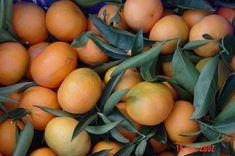
While reports in the last year have been charting the supposed decline of the satsuma, according to Duncan Macintyre, technical director of Muñoz Mehadrin UK, there is still a place for satsumas on the citrus shelves.
“We still see satsumas as a major priority, since as a product it has a great following,” says Macintyre. “Over the last 20 years there has been a gradual decline in satsuma production and some Spanish growers looking to replant have now moved towards clementines or mandarins. It’s difficult to persuade growers to invest in a crop for only one market, that is, the UK.“
With the exception of Turkey and Peru, countries exporting satsumas are increasingly investing in clementine production which can be sold at more premium prices and to a wider market. According to an Asda spokesman there is also an issue with poor quality. “Early and late season northern hemisphere satsumas are difficult to manage in terms of quality, showing signs of degreening burn or puffiness, and main season fruit is often associated with poor returns, thereby limiting scope for investment in crop management,” he explains.
“Southern hemisphere satsumas often gain better returns than clementines due to being available before the big volumes of European summer fruit.”
However, an EU-funded scheme has been set up to process satsumas for sale as tinned mandarins, which means that once quality or price drops in the fresh market place, growers can send whole crops for processing, according to Asda.
Macintyre says that demand in the UK has not abated, which could prove a sufficient impetus to effect a renaissance of the fruit. “The question now is whether we can reverse the trend. We are hoping some forward thinking specialist growers will take the opportunity and see that demand is still there even though the supply side is dropping.”
Muñoz Mehadrin imports Spanish satsumas between November and the end of January and Turkish satsumas are also available until mid-January. However, Macintyre says acreage of satsumas in Turkey is not increasing. At present there is a gap in the supply calendar between late January and March, until fruit from countries in the southern hemisphere becomes available.
To this end, Muñoz Mehadrin has begun research into breeding developments in Japan, with the hope of extending the season. And trials are under way in Spain, to introduce earlier satsumas, and in South Africa, to look at the possibility of later-harvesting varieties.
Asda has tried importing from Japan, since consumption of satsumas among the Japanese is high, but prices are not viable for normal commercial sale, the spokesman says.
According to Macintyre, while sales of citrus as a whole category naturally dip in the summer months owing to the influx of stone fruits and berries onto the market, for Muñoz Mehadrin satsuma sales are generally good year-round. “We are supremely confident that if we can fill the gap in supplies we can maintain high sales of satsumas. They are particularly suitable for children because they are one of the sweetest citrus fruits with the lowest acidity. They have a more subtle flavour which children prefer and they are almost guaranteed to be seedless,” he says.
Asda has received the same response from consumers and said it will continue to give its customers what they want regardless of what so-called connoisseurs claim they want.
And the chain is confident that the overall situation is not likely to suffer to any great extent. “Customers are not moving away from satsumas. They simply don’t buy them because they are not available for as long a period as clementines. There has not been a significant change over the last year. Tesco’s recent campaign was a good PR story. Although it’s long been known in the citrus world that Spanish production is declining and quality deteriorating, and that Turkey is very reliant on the weather. In the southern hemisphere season the contrary is true. In addition, Peru has recently become a major player and a success story in the late summer season, increasing the window of availability,” the spokesman claims.
Paul Olins, director of Poupart, is equally reserved about the possibility of an overall decline in satsuma production. In fact, at Waitrose, which Poupart supplies, sales of the fruit have actually gone up over the last season, he says.
“From my perspective, I am not trying to produce the same kind of volumes as the major retailers. Waitrose serves only about six per cent of the population. There is still a demand for satsumas and I have no problem providing for it.”
Poupart largely imports Hashimoto satsuma from Spain, although Olins is expecting Spain to drop out of the market before long. Since the demand for satsuma is now limited to the UK and a small sector of southern Germany, it is not viable for Spanish growers to plant new trees, especially when south Germany will drop satsuma imports as soon as the clementine season begins. Olins says organic producers are the only people still cultivating satsuma orchards in Spain.
Given Waitrose’ focus on sourcing fruit of a very high quality, Olins says he avoids both the earliest produce of the season, which is generally too green and the latest which is too tough. If a season is poor, however, he will happily switch to clementine which he insists is a far superior fruit, in terms of taste and reliability. His turnover for volumes of satsuma and clementine currently runs at a ratio of 28 to 72 per cent.
“If satsumas disappeared off the face of the earth, I wouldn’t be left with a huge loss in sales,” says Olins. “But they are not likely to, and if I can’t get them from Spain, I’ll try Turkey, South Africa or Peru.”



